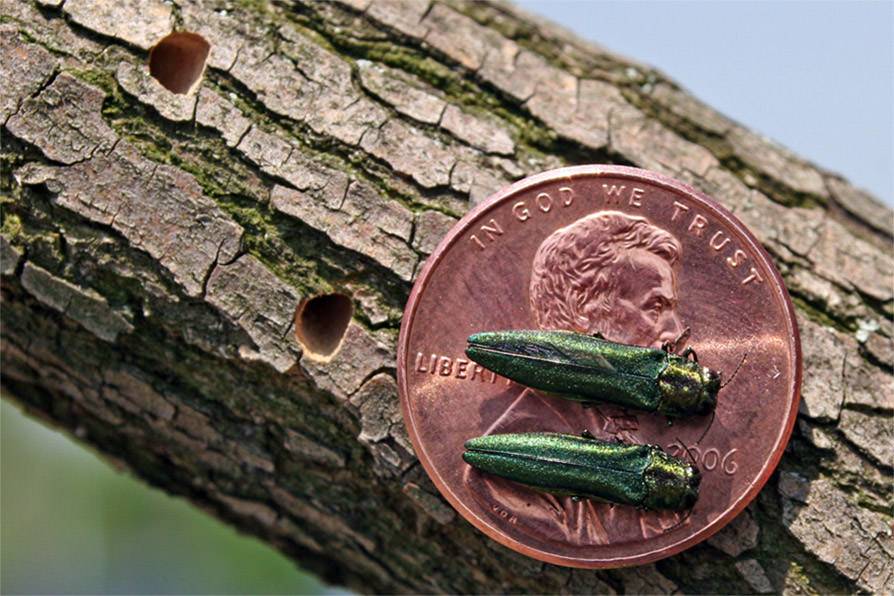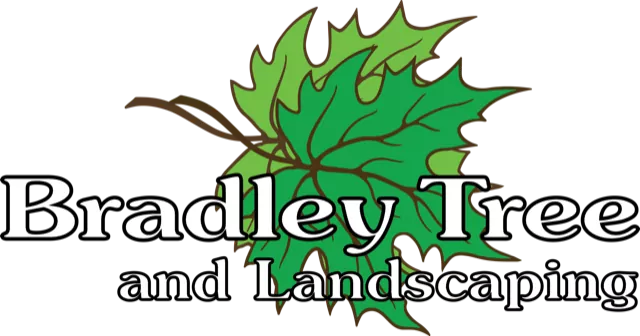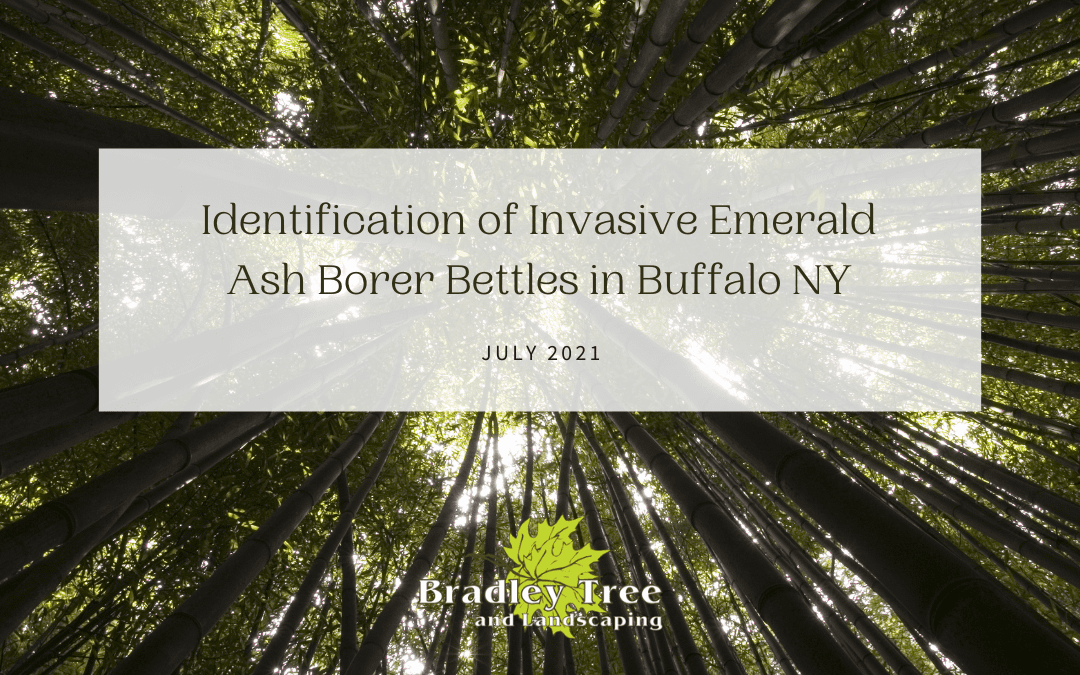Updated December 2022
Emerald Ash Borer (EAB) is a beetle species that is not native to the United States. Its origins are in Eastern Asia, but it was first noticed in North America in 2002 in the Detroit area. They were first noticed in New York in 2009 in Cattaraugus County. By 2015, this invasive species had spread to most of New York, including Buffalo. If you believe you have a tree that is being affected by this invasive species, call an ISA-Certified arborist immediately to assess the damage and confirm the infestation.
If this is your first time hearing about these invasive pests, read on! This guide will walk you through the most common signs of an infestation and general Emerald Ash Borer life stages so you know what to look out for. Of course, please contact a licensed arborist to confirm whether it’s EAB or another tree-dwelling insect. Even if this isn’t your first time hearing about these beetles, maybe you learn something new!
What are the Signs of Emerald Ash Borer Damage?
One sign a tree might have EABs are larval galleries. These are an S-shaped carving into the tissue of the tree that grows as the larva do. If you peel the bark of a tree that has housed EABs you will find several galleries. In the heaviest infestations, they will cover nearly the entire sapwood. If a tree survives the first year, you’ll see old galleries hallmarked by rounded sides from the tree’s new growth.
Another sign of Emerald Ash Borer’s damage is the D-shaped holes they chew in the tree bark on their way out as an adult. The holes are slightly bigger than the adult and are unique to the group of beetle the EAB belongs to. These holes are good proof, but not absolutely because other beetle species can create similar holes. Regardless, if you see an Ash tree with these holes contact your local licensed arborist immediately.
Leaf notches are another sign of an EAB infestation. The adult feeds on the leaves of the ash tree and cuts small notches into the side of the leaf. When the insect population reaches a certain point, the defoliation will be far more striking and cause a tree’s crown to be thinner and appear ragged.

Symptoms of Emerald Ash Borer Damage
One symptom trees that have EABs can develop are epicormic shoots, also known as suckers. They’re often produced on the tree trunk and roots when the tree is stressed, although sometimes they can be found in the crown and larger branches. Not every tree attacked by these beetles will develop suckers.
Another symptom that can develop as a result of EAB damage is cracks or splits in the bark of the tree. These will typically be over the larval galleries. Sometimes in young trees, the thin bark over the gallery will dry out and fade to a pinkish-brown coloration.
Yellow foliage, dead branches, and thin crowns can also develop on trees that are and were infested with EABs. The larvae feeding will eventually kill the branches. As those branches die, the foliage yellows before wilting and falling off, leaving the bare branch exposed. Trees will also produce more seeds due to the stress, but few of them will be viable to start the growth of new trees.
Emerald Ash Borer Life Stages
Emerald Ash Borers have four life stages: adult, egg, larvae, and pupa. The adult beetle has a shiny emerald or metallic-green-colored body. Their eyes are black and shaped like kidneys. The adult has a slender body of about ½” long and ⅛” wide. They emerge from June through August and can be found around the leaves of Ash trees that they eat. Females deposit eggs under crevices in the bark of the tree.

Eggs are flat and oval-shaped. They’re much smaller than the adult and range in color from a creamy yellow to a reddish-brown.
From this tiny egg, a larva emerges. They range in size from 1” to about 1 ¼” long, and have a creamy white and lightish green body with a brown head. They feed between the sapwood and bark along the length of the tree’s trunk and on branches an inch or more in diameter. The larvae feeding is what disrupts the tree’s nutrient flow which eventually kills the tree. Larvae will molt four times before becoming pupae.
The pupa stage follows the larva stage; it’s the insect’s transformation to an adult. The pupa is initially beige before it darkens and develops the coloration of an adult beetle.
Importance of stopping the spread of EABs
New infestations of EABs are very hard to detect. Typically, by the time a tree is exhibiting signs of an infestation, the beetles have taken a heavy toll on it. However, identifying a heavily infested tree is still a good thing, because you can catch the beetle before it has the time to take hold of neighboring trees. EABs have killed over 10 million Ash Trees in the US since their first detection, so controlling the invasion is essential.
Ash is valuable for its uses in baseball bats, hardwood flooring, lumber, furniture, shipping pallets, firewood, and as a shade tree among other uses. It’s estimated that approximately 8% of New York’s trees are Ash species. It’s also assumed that they are a contributing factor to the state’s $9 billion forest-based recreations and tourism industry.
The emerald ash borer (EAB) is an invasive species of beetle that has caused significant damage to ash trees in the United States. The beetles feed on the bark of ash trees, which can kill the tree within a few years. Stopping the spread of EAB is important because ash trees are a vital part of many ecosystems in the United States, providing habitat and food for a wide range of animals. In addition, ash trees are also an important source of wood for many industries. Controlling the spread of EAB is critical to protecting these trees and the ecosystems and industries that depend on them.
If You Suspect Emerald Ash Borers, Contact Us Immediately!
The certified arborists at Bradley Trees want to ensure your tree’s health. We want to prevent this invasive species from robbing the WNY landscape of another tree species. The American Chestnut was functionally killed off decades ago and we don’t want to lose another. If you have any questions about your trees, call us at Bradley Trees at (716) 293-2091, or visit our website and fill out a contact form. You can follow along with us on our social media too!

